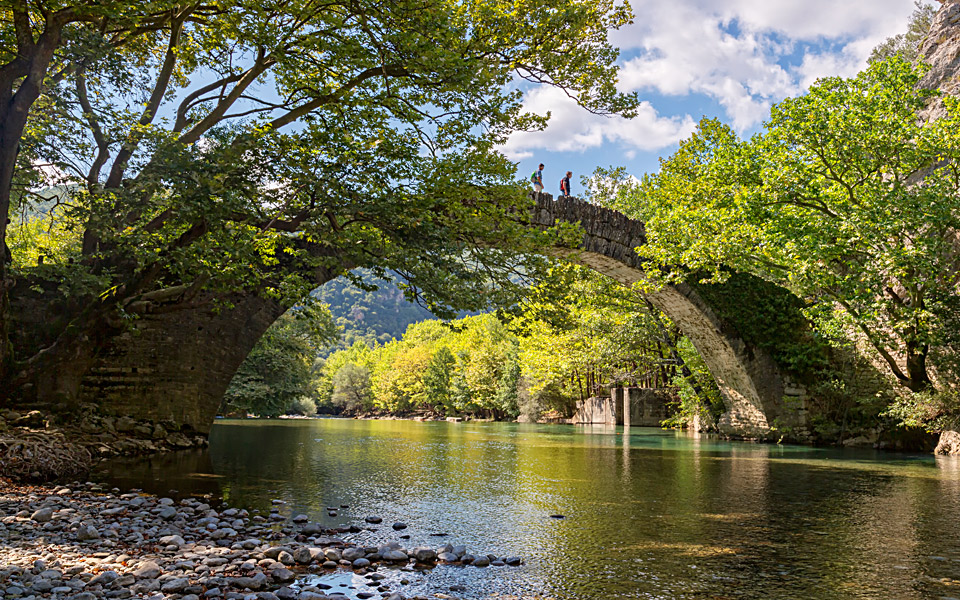Gorges, rivers, dense forests, steep slopes, natural pools, rocky peaks, such as the seemingly sculpted Astraka peak, and the so-called “Dragon Lakes” (drakolimnes) – the dwelling places of dragons, according to local legend – await the more adventurous traveler.
It’s no wonder that in ancient times the Zagori region was known as Parorea, meaning “beyond the mountains”. In the 6th century, when the Slavs arrived, it was renamed Zagori, meaning “place behind the mountain.” This is an imposing place, challenging and untamed by the demands of modern civilization.
An exception to this are the friendly, warm guesthouses and luxury hotels of central and western Zagori. Especially in the autumn, when the colors change day by day, a visit to this magical place is a must for these reasons:
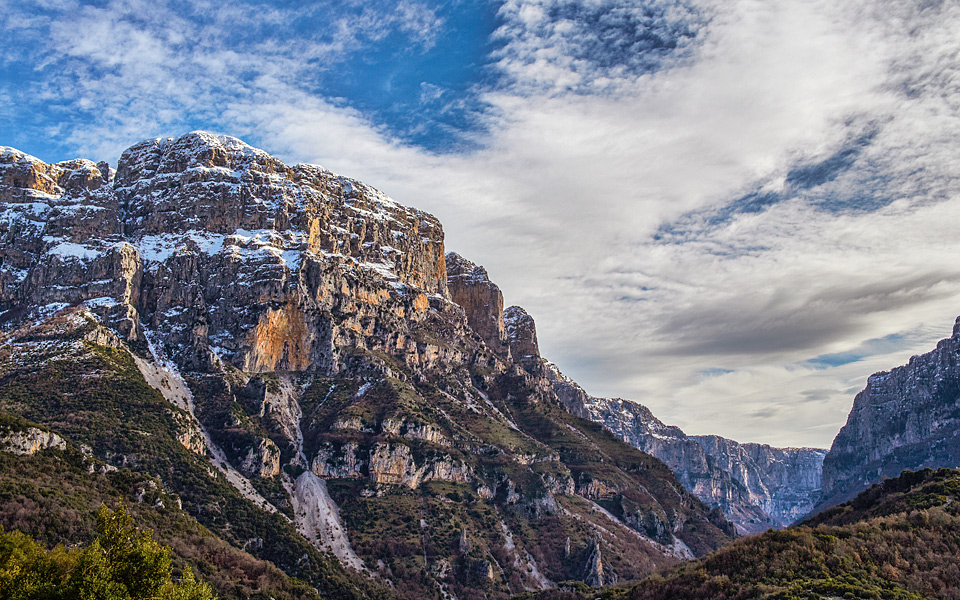
© Perikles Merakos
Vikos Gorge
The renowned Vikos Gorge in Epirus is registered in the Guinness book of records as the deepest gorge in the world in proportion to its width, with a depth of more than 900 meters, while its narrowest opening is just 1.1 meters.
For a panoramic view, head to the small Aghia Paraskevi church, located beyond Monodendri, and walk along the cliffs with caves. Alternatively, look for the two other natural terraces by heading towards Oxia or the Beloi viewpoint in Vradeto.
Listen to the silence of Zagori from this point and enjoy the clean air and the scent of herbs. It takes roughly six hours to trek the length of the gorge, to forget all your cares, your cell phone (which won’t have a signal here anyway) and to become well aware that in Zagori life follows the rhythms of nature.
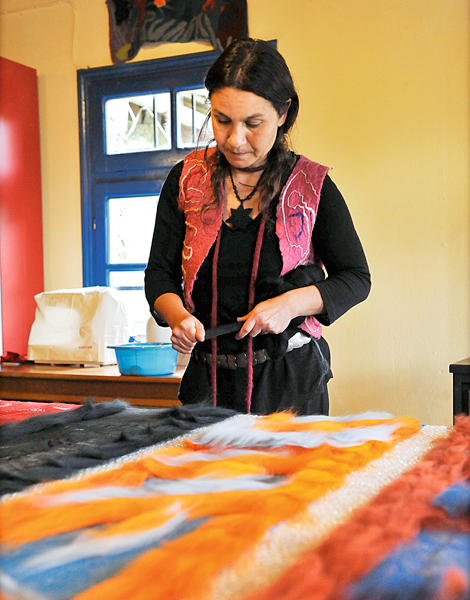
© Alexandros Avramidis
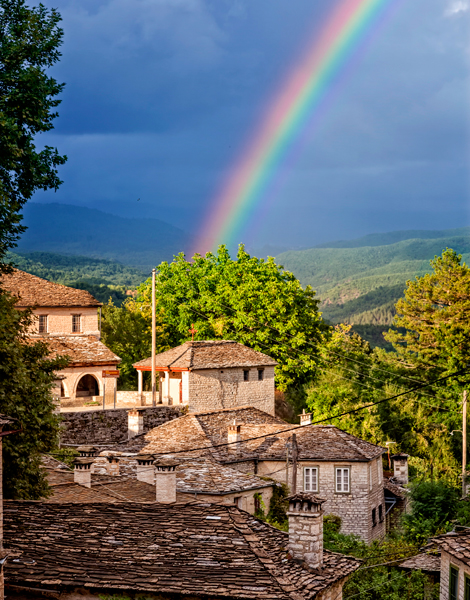
© Perikles Merakos
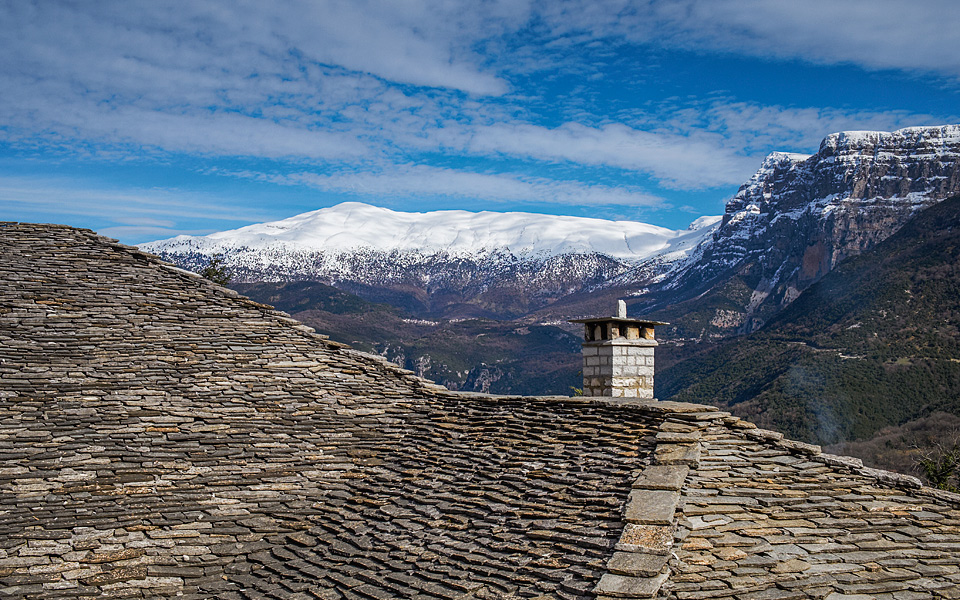
© Perikles Merakos
Wandering the 25 villages of central Zagori
At Monodendri, one of the most touristically developed villages, visit the Rizarios School of Handicrafts and their gift shop with elaborate embroidery and weaving, have a coffee under the huge plane trees and open out your map to plan your routes. Because of the intense weather conditions and the difficult landscape, the inhabitants of Zagori realized early on the importance of cooperating among themselves to survive, and build their villages in a way so that one village was in easy sight of the other, thus maintaining visual contact.
Pano Pedina see a little of Elati, while Kapesovo which is higher sees Dikorfo, Manesi, Elati, Monodenri, Vitsa and Dilofo. This last village, with only 10 inhabitants in the winter, its cobbled streets, stone houses, a huge plane tree in the square and semi-deserted square and stray cats everywhere has an almost cinematic charm and few guesthouses for those who want to stay here. Even more impressive than the architecture of the local houses are the stone bridges of the Zagori villages, such as the triple-arched Plakida-Kalogeriko structure at the entrance to the village of Kipoi.
Exploring western Zagori
A winding road leads to the western Zagori, and it’s necessary to drive slowly because of the many bends but also because of the herds of sheep, cows or individual wild horses which meander across the road. You’ll know you’ve reached west Zagori once the remarkable Astraka Towers come into view. The imposing cliff towers dominate the villages on this side of the region: Aristi, Megalo Papigo and Mikro Papigo. There is a bridge which the locals call either the Papigo bridge because it was built with donations from a Papigo villager, or the Aristi bridge because it’s close to Aristi village. Whatever you call it, when you reach here follow the sound of the babbling brooks and soon you’ll find yourself on the banks of the Voidomatis river.
VISIT
The Rizarios Handicraft School in Monodendri. Photography exhibition space, museum, Epirus folk art shop. • Tel. (+30) 26530 71382, (+30) 26530 71119
Costas Lazaridis Museum (tel. +30 26530-71775) in Koukouli. It hosts a collection of rare plant species that grow in the Vikos gorge. • Tel. (+30) 26530 71775
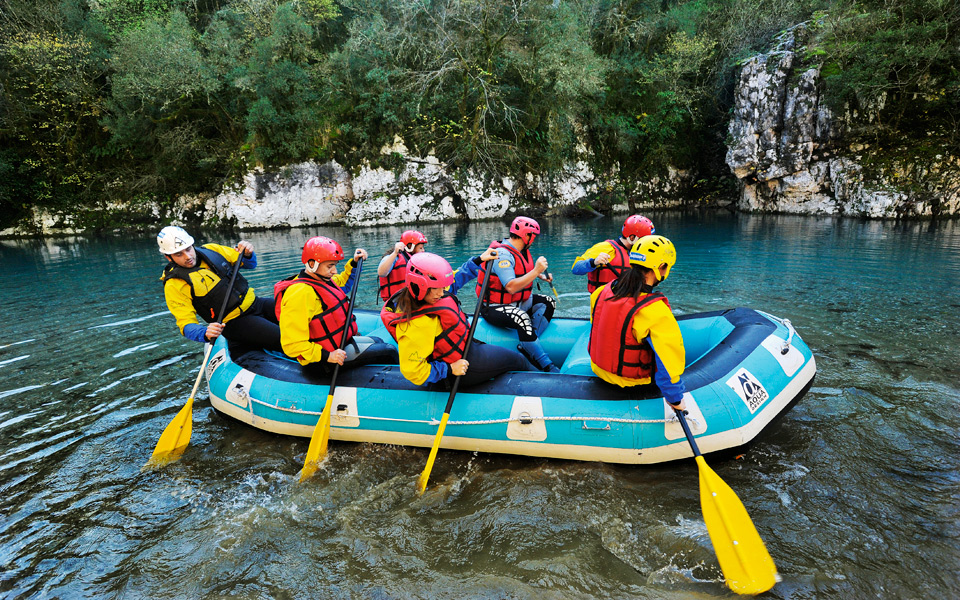
© Alexandros Avramidis
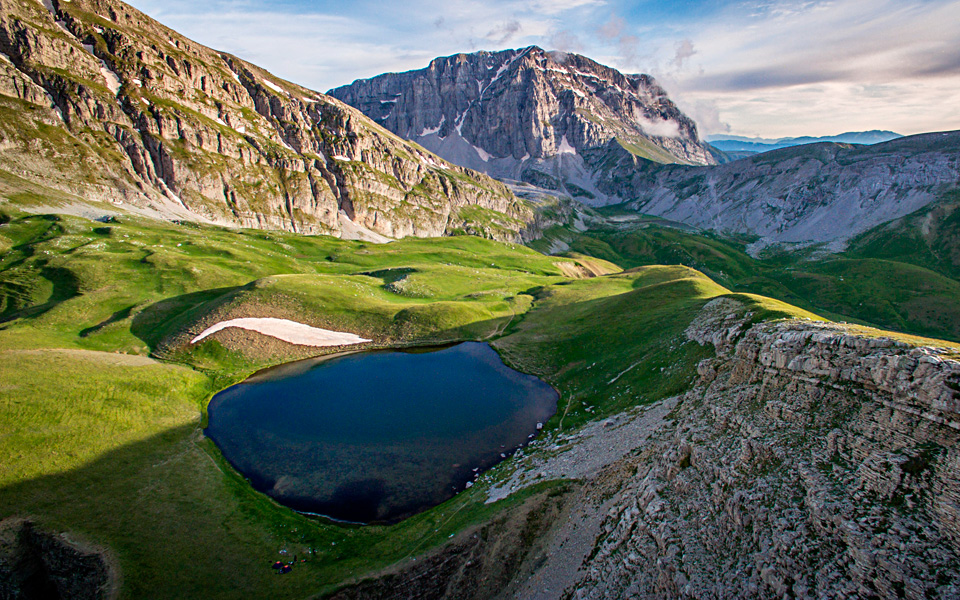
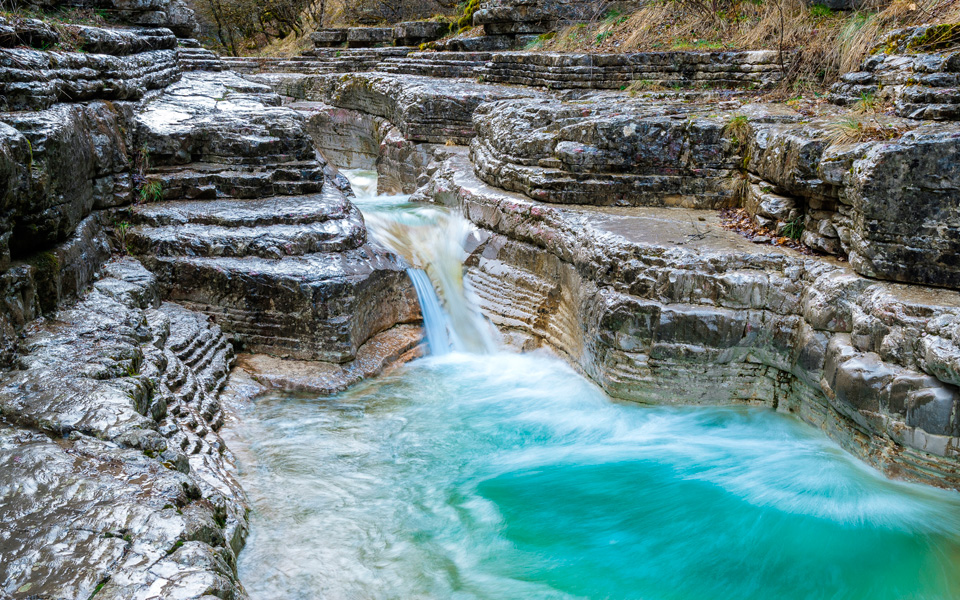
Rafting on the Voidomatis River
Bronze plane tree leaves flutter in the air this time of year with even the gentlest of breezes, painting the shores of the riverbank a coppery red. White-throated dippers and wagtails flit about, while well-tended trails await anyone who feels like trekking along the river through the forest of pine, fir, oak and beech. The same trekking groups also organize horse riding, 4X4 and paragliding adventures.
Kolymbithres
Another wonderful hiking area is Kolymbithres, 500 m from Mikro Papigo. Forget about your phone once again and lose yourself in the rich natural landscape. This is basically a small canyon cut by the river Rogovo. The flow of the water with the passage of time has carved the rocky sides of the canyon, creating a beautiful landscape. Some of the water pools are deep enough to dive into. It is said that Ali Pasha of Ioannina used to enjoy summer swims here.
Drakolimnes (“Dragon lakes”)
The bravest, most experienced and adventurous hikers, well informed about the weather conditions, follow the trail that leads to the “dragon lakes”. Alpine newts inhabit the waters of the lake located in Tymfi at an altitude of 2,050 m in a location of exceptional beauty. It is approximately one hour from Diaselo and about five hours’ hiking from Mikro Papigo.
Even further north, with its own alpine newts (the dragons) is the Dakolimni of Smolikas. The autumn and spring are the best times to visit, since in the winter, the snow and strong winds make it inaccessible.
ACTIVITIES
Alpine Zone, Activities include rafting, rowing, 4X4 excursions and paragliding • Tel. (+30) 26510-23222, (+30) 6974-659999
Trekking Hellas Epirus, Rafting, mountain biking, trekking, river trekking • Tel. (+30) 26510-71703, (+30) 6944-750009 • [email protected]
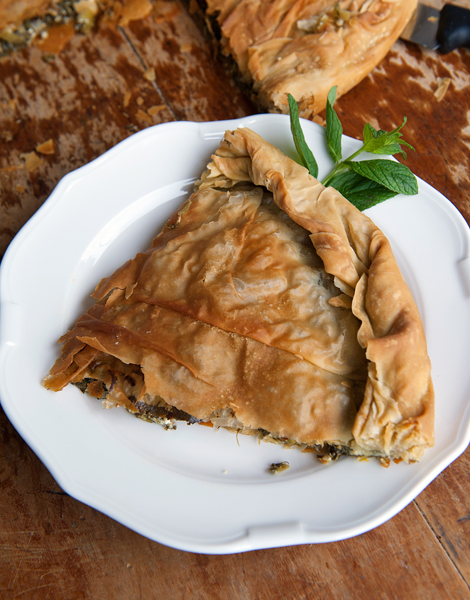
© Akis Orfanidis
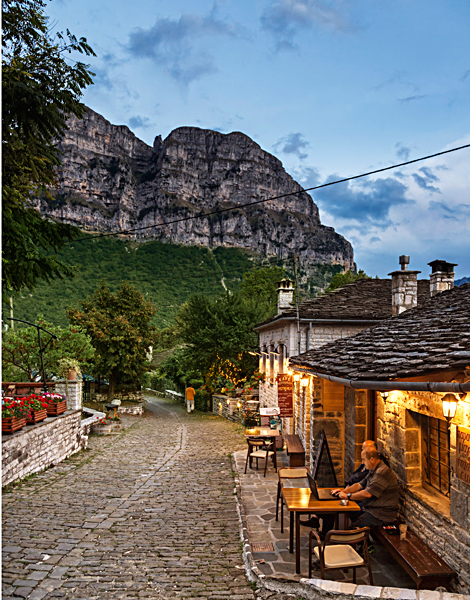
© Perikles Merakos
A delight for the senses
Beyond the stunning landscape and bountiful fresh air, you’ll find cozy guesthouses with a unique atmosphere of warmth and luxury hotels with minimalist aesthetics and all modern conveniences enclosed within their thick stone walls. The food is excellent, not only the famous Epirus pies, but for everything else in outstanding restaurants such as Sta Riza in Elati, sophisticated hotel restaurants like Salvia of the Aristi Mountain Resort, themed restaurants such as Kanela kai Garyfalo in Vitsa focusing on Pindos mushroom, both farmed and wild. Sterna in Kapesovo sells delicious sweets and marmalades, local raki, liqueur wine and mountain herbs. With these, you’ll be able to keep the memories of the genuine taste of Zagori alive long after you go home.
Also consider visiting eastern Zagori, which is far less developed in a touristic sense but just as impressive.
GETTING THERE
Zagori is located approximately 500 km from Athens. The drive takes 6-6½ hours. Fuel and road toll costs amount to around 180 euros (return). Zagori is located roughly 300 km from Thessaloniki. The drive takes 3 hours. Fuel and road toll costs nearly 100 euros (return).
TIP | ATMs may only be found at Kipous and Kalpaki.

